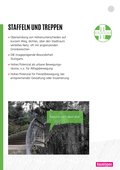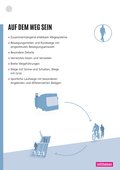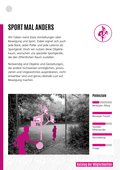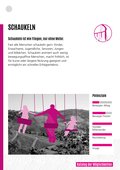Masterplan for Urban Movement Spaces, Stuttgart, Germany
The master plan shows the framework conditions for the health-conscious and exercise-oriented design of the state capital Stuttgart and, with its adoption in the municipal council, forms a framework for political action and the action of the administration in the various offices. It formulates a guiding principle and refers to various levels of urban planning, into which it must be implemented and concretized. It conveys a basic planning attitude with an integrated and open approach to urban space. This is one of the greatest opportunities and at the same time the greatest challenge in implementation.
Movement-friendly urban space is a multifunctional urban space. It considers paths for walking and cycling in a networked way and offers selective and coordinated incentives for exercise and sport, thus creating incentives for behavioural change and encouraging playful movement and sporting activities. In a multifunctional urban space, the focus is equally on everyday movement and movement in leisure time, and social interaction is made possible. Multifunctional urban space is distinctive and designed with a variety of stimuli. It encourages people to move independently and safely in the urban space and enables free accessibility and different perspectives - for children, young people, adults and older people.
This is where the "Stuttgart Master Plan for Urban Movement Spaces" comes in. The aim of the master plan is to think of Stuttgart's urban space as a space for movement. This also and especially applies where sport and exercise seem less appealing, for example due to dense building development. In order to achieve this goal, public space should be designed in such a way that it w. Because movement needs appealing urban space. Especially in places where people spend time and move around on a daily basis, where paths are covered several times a day and squares serve as meeting places, a stimulating design can transform these places into urban spaces for movement and thus significantly increase the amount of time spent moving that is conducive to good health. Accessible to all, urban space brings movement to people in this way - as something taken for granted and quite incidentally. Urban movement areas should be permanently considered in all future planning processes. This is about more than just installing exercise equipment.
The Corona crisis in particular showed how important open spaces in the immediate surroundings are and how important their quality is. There is a clearly measurable connection between the quality of urban structures, public urban space and its frequency of use by people walking or cycling. Where urban spaces are designed attractively and from the perspective of walking people, where there are incentives that encourage movement, where social interaction is possible, where there is (traffic) safety for walking and cycling people, that is also where people like to move.
| Year |
2020 |
| Project type |
Masterplan; Instrument for urban planning, sports planning, open space planning and social planning |
| Client |
Stadt Stuttgart, Amt für Stadtplanung und Wohnen und Amt für Sport und Bewegung |
| Authors |
ARGE Dr. Katrin Korth (Korth StadtRaumStrategien), Dirk Schelhorn (Schelhorn Landschaftsarchitektur), Prof. Dr. Philipp Dechow und Valerie Sporer (ISA Internationales Stadtbauatelier) |





















